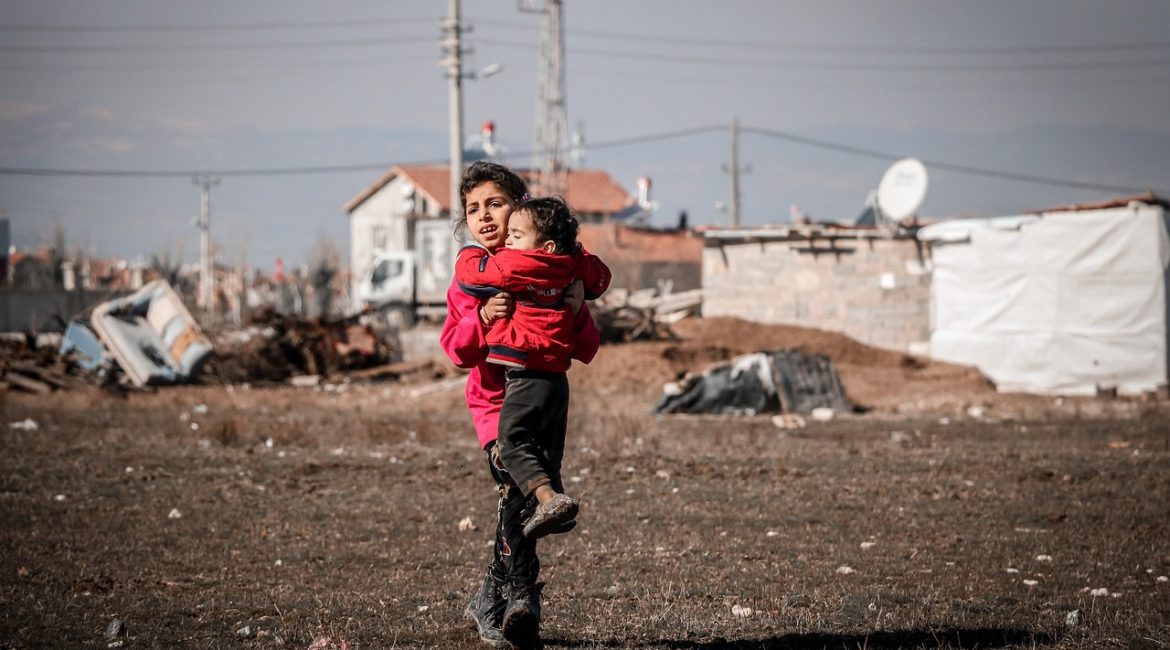The millions of civilians in need of humanitarian aid in Syria are affected because the declining of the international help this year, after the World Food Program (WFP) has ended its mandate for the country as of 2024.
The Syrian government recently extended its approval for United Nations humanitarian aid to be delivered through a point-crossing with Turkey for another six months.
This reaction is an attempt by Syrian President Bashar al-Assad government to enhance his legitimacy in the eyes of the international community since Russia, a main backer of Assad, blocked UN Security Council resolution to use the Bab al-Hawa crossing in July, forcing international partners to work with Damascus.
Previously, the UN had utilized four border crossings to provide relief to areas beyond the Syrian government's control, following a 2014 UN resolution sanctioned by the Security Council. However, starting with 2017, Russia and China have gradually challenged this mandate, asserting that all aid should be routed through Damascus.
Since 2020, Russia and China have advocated for restricting aid deliveries to only one crossing, namely Bab al-Hawa. However, financial aid allocated to Syria has significantly dropped over recent years due to the prolonged crisis in the country, and more demands elsewhere, straining the financial capacities of aid organizations.
Last year, the WFP announced the closure of its food program in Syria, supporting 5.6 million people, including those displaced in the country's northwest.
Simultaneously, USAID and the State Department implemented at least 30 percent significant reductions in US assistance for Syria, a move anticipated to be mirrored by European donors.
In 2021, 1,000 aid trucks were entering Syria's north, but this number decreased to 445 last year, and the humanitarian situation is not getting better.
The main reason behind the scaling back of aid appears to be the reluctance of donors. Not only for residents of Syria’s north but also for Syrian refugees in Jordan and Lebanon, the amount of aid is almost reduced to a half.
In December last year, WFP stated that its budget was shrinking because of donor fatigue, the pandemic, the war in Ukraine, and the Israel’s war on Gaza. It also announced that it needed $593m for six months to properly maintain its operations.
The gradual loss of funding is believed to be resulting in substantial service gaps for Syria’s internally displaced refugees, but more importantly in intensifying certain vulnerabilities.
Among these vulnerabilities are drugs and joining armed groups, including the Syrian Democratic Forces (SDF), the Islamic State (ISIS), or pro-Iran and Russia-financed militias.
There have been recent reports stating that ISIS has gathered strength in the last few months and even been attempting to begin collecting taxes. The number of ISIS attacks continued trending upwards in recent months, with December witnessing a total of 12 armed attacks. Furthermore, a place like Syria is a perfect hotspot for armed groups to recruit.
There’s an endless supply of frustrated and desperate young men who know nothing except war. People can’t find jobs or imagine a decent future. Police and security services are brutal in all corners of Syria, but they’re also weak and dysfunctional, due to all-pervasive corruption, a shortage of resources, large areas that are basically lawless, and gaps in governance.
The danger is not only the revitalization of ISIS or the intensification of armed conflict but it also comes from drugs.
The Assad government is believed to be making billions of dollars through trafficking drugs to Western and Gulf countries. Eighty percent of Captagon, a highly addictive amphetamine drug, is produced in Syria, and its trade is estimated to be worth billions of dollars annually.
The worsening economic situation along with the decreased international aid is exposing Syrians to illicit activities more than ever.
The Syrian government has recently removed subsidies, increased taxes and oil prices, which has led to rare protests last summer. Moreover, food prices have doubled in less than a year. As a result, ninety percent of Syria’s population live under the poverty line.
The UN estimates that the number of people in need of humanitarian assistance surpassed 15 million in 2023, a five percent rise in comparison with the previous year. This number is expected to rise to 16.7 million in 2024.

